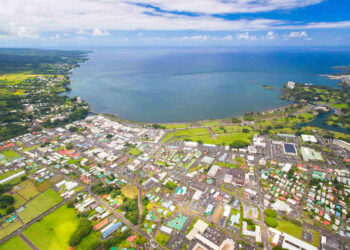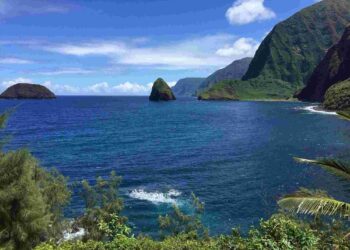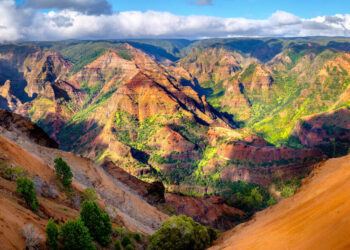The Road to Hana is a 64-mile highway (Route 360) on Maui’s northeastern coast, stretching from Pa‘ia to Hana. Famous for its 620 curves, 59 bridges and diverse scenery, it’s a top attraction for visitors. The drive takes about 2.5 to 3 hours one way without stops, but most people spend 8-12 hours exploring waterfalls, rainforests, beaches, and cultural sites. The road is quite narrow and winds frequently, which requires for careful driving, but the stops make it a memorable experience. This guide covers the road’s history and key places to visit, with practical details for planning a trip.
History of Road to Hana
The history of the Road to Hana goes back centuries. It was first used by Native Hawaiians as a footpath known as the “King’s Highway,” at that time to connect coastal villages for trading goods like fish and taro. In the early 1900s, the route was further widened in order to support sugarcane plantations, with workers building bridges and carving paths into cliffs. By the 1920s, it was a rough road for vehicles, fully paved only in the 1980s. Hana, once a sugar industry hub, is now a quiet town of about 1,200 people, known for its rural, relaxed lifestyle.
Places to visit
1) Twin Falls
Just past mile marker 2, Twin Falls is an early stop on the Road to Hana. It is a 0.5-mile trail, which can get muddy after rainfall, that leads to two waterfalls with pools where one can swim. The water in the pool is cold but refreshing, and the site has a parking lot along with restrooms. In order to avoid crowds, one can get there before 8 AM and water shoes are also recommended for slippery rocks. There’s no entrance fee, but parking is limited. A nearby food stand offers smoothies and snacks, making it a convenient spot for a quick break.
2) Garden of Eden Arboretum
The Garden of Eden Arboretum is a 26-acre botanical garden which showcases over 500 plant species. Situated around mile marker 10.5, it is a lookout point providing views of the coastline and Puohokamoa Falls, which is ideal for photos. The garden also has picnic tables and restrooms, with an admission fee of $20 per adult and is open from 8 AM to 4 PM.
3) Waikamoi Falls
Near mile marker 16, Waikamoi Falls is a quieter stop with a 30-foot waterfall and a small pool. One has to walk through a 0.2-mile trail, which gets quite steep and slippery when wet. The falls are less crowded, offering a peaceful retreat, but there are no facilities, and parking is limited to a small pullout. This stop is ideal for those wanting a quick, low-key experience away from busier sites.
4) Ke‘anae Peninsula
Ke‘anae Peninsula, is a coastal village with deep cultural significance, and can be reached at mile marker 17 by taking a detour. The village has Taro fields and a peaceful stone church, named Lanakila Ihiihi o Iehova Ona Kava, which was built in 1860 from coral and lava rock, reflecting the area’s history. The rocky beach there is a popular spot for talking photos than swimming due to strong waves. Visitors should respect private property in the village, where parking is limited and restrooms are unavailable. A 30-45 minute visit covers the highlights.
5) Wailua Falls
Wailua Falls, at mile marker 45, is a 80-foot waterfall flowing into a large pool which is visible from the road, and has a steep path for closer views. The falls are also culturally significant, as they are linked to Hawaiian legends. Arriving before 9 AM secures parking along the road, as there are no facilities. It’s great for photos, and swimming is possible if water conditions are safe. Staying on marked paths avoids trespassing on nearby private land.
6) Honomanu Bay
Near mile marker 14, Honomanu Bay features a black sand beach formed by ancient lava flows, framed by cliffs and rough surf. Though the bay is popular with local surfers, it’s not ideal for swimming due to quite strong currents. There are no facilities, making it a quick visit. The bay’s volcanic landscape appeals to those interested in geology, contrasting with the surrounding jungle.
7) ‘Ohe‘o Gulch (Seven Sacred Pools)
Ten miles past Hana, at mile marker 42, the ‘Ohe‘o Gulch, often called the Seven Sacred Pools, lies within Haleakalā National Park. This series of tiered pools, fed by mountain streams, flows into the ocean, creating a dramatic scene. Trails from 0.5 to 2 miles lead to the pools and coastal views. Swimming is allowed when safe, but the area closes during heavy rain due to flash floods. The park fee is $30 per vehicle (2025 pricing), and a visitor center with restrooms is open from 9 AM to 5 PM.
Planning Your Trip
The Road to Hana is a full-day adventure. Start at 6-7 AM to avoid traffic and crowds. Drive a reliable car; rentals like sedans work, but 4WD helps for side roads. Bring cash for food stands (many don’t take cards), water, snacks, and a towel for swimming. Also, download maps offine as cell service can get bad.
Why Visit?
The Road to Hana offers a mix of natural beauty, cultural history, and adventure. Each stop whether it’s a waterfall, beach, or village, they tell part of Maui’s story, from its volcanic origins to its Native Hawaiian roots. It showcases a side of Maui far from its resorts, where the land and its people remain the focus.











